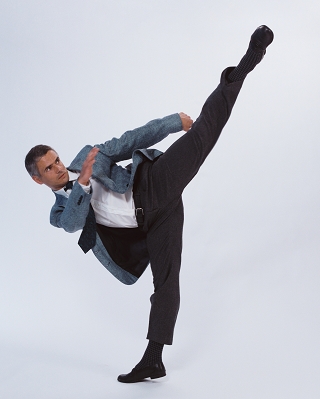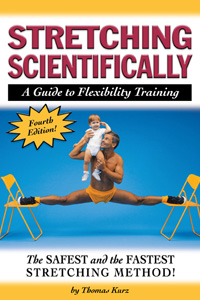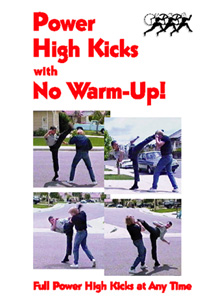by Thomas Kurz
After immigrating to the U.S.A. in the early 1980s as a political refugee, I was looking for a way to make a living from my sports-science know-how. So I was looking at publications on various aspects of sports training and p.e., among them martial arts’ magazines. Especially in those martial arts’ magazines, I noticed a need for good instruction on practically everything. I decided to sell my know-how on flexibility, because it’s so easy to advertise.
Think, how would you advertise, let’s say, the best method to improve a high jump and a reach jump? It’s difficult to show a photo of a dynamic movement that convinces people. But with flexibility it is very easy: a photo of a split between chairs proves a point: the great range of motion combined with considerable strength. But I did not use a photo of a front-back split — I used a photo of a straddle split because, unlike the front-back split, it plays on a human viewer’s “monkey mind.” It is similar to a frontal presentation, the posture assumed by primates (monkeys, apes, and humans) in confrontations. Below are examples of the frontal presentation posture in primates:

Gelada, a large baboon-like monkey, in frontal presentation posture, a posture of dominance

Members of Waihirere from Gisborne perform during Te-Matatini National Kapa Haka Festival in 2015 in Christchurch, New Zealand

Maori haka dance performed by Munster Rugby team
The New Zealand National MMA Team performs a Maori haka dance at IMMAF Worlds 2018

The photo of a straddle split (side split) I used in advertisements for my books and videos on flexibility training.

In advertisements I also used photos of my high kicks. High kicks look similar to straddle splits, and so to the frontal presentation posture of primates.



